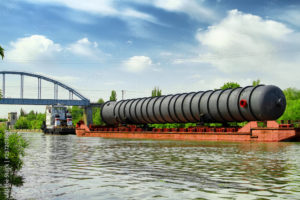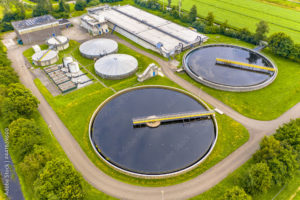Agri Chemicals: Revolutionizing Crop Protection and Pest Management
As the global population continues to soar and the demand for food increases, the need for efficient crop protection and pest management becomes paramount. Agri chemicals have emerged as the game-changer, revolutionizing the agricultural industry and ensuring higher yields and better quality crops.
These chemical compounds, including pesticides, fungicides, herbicides, and insecticides, are designed to target and control pests, diseases, and weeds that pose a threat to crops. With their ability to selectively eliminate harmful organisms while preserving the health of the plants, agri chemicals have become an indispensable tool for farmers worldwide.
By incorporating advanced technologies and scientific research, agri chemical companies are continuously developing innovative solutions that address the evolving challenges faced by the agriculture sector. From genetically modified organisms (GMOs) to biopesticides, the industry is exploring sustainable alternatives that minimize environmental impact without compromising productivity.
Stay tuned to learn more about the latest advancements in agri chemicals, how they are transforming crop protection, and their role in ensuring food security for a growing population.
The importance of crop protection and pest management
Crop protection and pest management play a crucial role in ensuring food security and sustainable agricultural practices. Without effective measures to control pests, diseases, and weeds, crop losses can be devastating, leading to reduced yields and compromised food production. This not only impacts farmers’ livelihoods but also poses a threat to global food security.
Agri chemicals provide a solution to these challenges by offering targeted and efficient ways to combat pests and diseases. They help farmers protect their crops from harmful organisms, ensuring healthier plants and maximizing yield potential. With the increase in global population and the need to produce more food, agri chemicals have become an essential tool for modern agriculture.
Evolution of agri chemicals in agriculture
The use of agri chemicals in agriculture has come a long way since their inception. In the early days, farmers relied on traditional methods such as manual labor and crop rotation to control pests and weeds. However, as the demand for higher yields and more efficient crop protection grew, the need for innovative solutions became evident.
The development of synthetic pesticides in the mid-20th century marked a significant milestone in the evolution of agri chemicals. These chemical compounds were specifically designed to target and eliminate pests, diseases, and weeds that threatened crop health. The introduction of synthetic pesticides revolutionized crop protection, allowing farmers to safeguard their crops more effectively and increase productivity.
Over the years, agri chemical companies have continued to invest in research and development, leading to the discovery of new active ingredients and improved formulations. This has resulted in more effective and environmentally friendly solutions that address the evolving challenges faced by farmers.
Types of agri chemicals and their functions
Agri chemicals encompass a wide range of compounds, each with its specific function and mode of action. Let’s take a closer look at some of the most commonly used types of agri chemicals:
1. Pesticides: Pesticides are chemicals designed to control or eliminate pests, including insects, weeds, and plant diseases. They can be further classified into insecticides, herbicides, and fungicides, depending on their target organisms.
– Insecticides: Insecticides are used to control insect pests that feed on crops, causing damage and reducing yields. They work by interfering with the insect’s nervous system or disrupting their life cycle, preventing them from causing further harm.
– Herbicides: Herbicides are primarily used to control weeds, which compete with crops for resources such as water, nutrients, and sunlight. They selectively target and eliminate unwanted plants, allowing cultivated crops to thrive.
– Fungicides: Fungicides are used to control fungal diseases that can damage crops and reduce yield. They work by inhibiting the growth and reproduction of fungi, preventing the spread of diseases.
2. Biopesticides: Biopesticides are derived from natural materials such as plants, bacteria, or fungi. They offer an alternative to traditional synthetic pesticides, providing effective pest control while minimizing environmental impact. Biopesticides are often used in integrated pest management (IPM) programs, which combine multiple pest control strategies to achieve sustainable crop protection.
3. Genetically Modified Organisms (GMOs): GMOs are plants or animals whose genetic material has been altered through genetic engineering techniques. In agriculture, GMOs are often engineered to exhibit traits such as pest resistance or herbicide tolerance. These traits allow crops to withstand pests or herbicide applications, reducing the need for extensive pesticide use.
Each type of agri chemical has its advantages and limitations, and their selection depends on factors such as the target pest, crop type, and environmental considerations.
Benefits of using agri chemicals
The use of agri chemicals offers several benefits for farmers and the agricultural industry as a whole. Some of the key advantages include:
1. Increased Yield and Quality: Agri chemicals help protect crops from pests, diseases, and weeds, allowing them to grow and develop to their full potential. This leads to higher yields and improved crop quality, which translates into increased profitability for farmers.
2. Cost-Effectiveness: Agri chemicals can be a cost-effective solution for crop protection. By preventing or minimizing crop losses, farmers can avoid significant financial losses and maximize their return on investment.
3. Efficient Pest Control: Agri chemicals provide targeted and efficient pest control, allowing farmers to combat specific pests without harming beneficial insects or plants. This precision helps maintain a balanced ecosystem and promotes sustainable agricultural practices.
4. Time-Saving: Agri chemicals offer a time-saving solution for farmers, as they provide quick and effective control of pests and diseases. This allows farmers to focus their time and resources on other important farm activities, leading to increased productivity.
While the benefits of agri chemicals are evident, it is essential to use them responsibly and in accordance with recommended guidelines to minimize potential risks and environmental impact.
Challenges and controversies surrounding agri chemicals
Despite their undeniable benefits, agri chemicals have faced criticism and controversies over the years. Some of the key challenges and concerns include:
1. Environmental Impact: The use of agri chemicals can have unintended environmental consequences. Pesticides, for example, can contaminate soil, water bodies, and non-target organisms, leading to ecological imbalances and potential harm to the environment.
2. Resistance and Residue Issues: Frequent and improper use of agri chemicals can lead to the development of resistance in pests, rendering the chemicals less effective over time. Additionally, excessive use of pesticides can result in pesticide residues on crops, raising concerns about food safety.
3. Health Risks: Agri chemicals, if not used properly, can pose health risks to farmers, farmworkers, and consumers. Exposure to certain chemicals can lead to acute or chronic health effects, highlighting the importance of proper handling, application, and safety measures.
Addressing these challenges requires a comprehensive approach that includes responsible use of agri chemicals, adoption of integrated pest management practices, and continuous research and development of safer alternatives.
Sustainable and eco-friendly alternatives to agri chemicals
In recent years, there has been a growing demand for sustainable and eco-friendly alternatives to agri chemicals. The agricultural industry is increasingly exploring and adopting innovative solutions that minimize environmental impact while ensuring effective crop protection. Some of these alternatives include:
1. Biological Controls: Biological controls involve the use of living organisms, such as beneficial insects, nematodes, or microorganisms, to control pests or diseases. This approach promotes natural pest suppression and reduces reliance on synthetic pesticides.
2. Crop Rotation and Diversification: Crop rotation and diversification are traditional methods that help break pest cycles and reduce the need for chemical inputs. By alternating crops or introducing diverse plant species, farmers can disrupt pest habitats and reduce pest pressure.
3. Precision Farming: Precision farming utilizes technologies such as GPS, remote sensing, and data analytics to optimize agricultural practices. By precisely applying inputs, farmers can minimize the use of agri chemicals, reduce waste, and increase resource efficiency.
4. Integrated Pest Management (IPM): IPM is a holistic approach that combines multiple pest control strategies to achieve sustainable crop protection. It involves monitoring pest populations, using thresholds to determine intervention, and integrating various pest control methods, including agri chemicals, biological controls, and cultural practices.
These sustainable alternatives not only minimize the environmental impact but also contribute to the long-term viability of agriculture by promoting biodiversity, soil health, and ecosystem resilience.
Best practices for using agri chemicals
To ensure the safe and effective use of agri chemicals, farmers should adhere to best practices and guidelines. Here are some key recommendations:
1. Read and Follow Label Instructions: Always read and follow the instructions provided on the agri chemical labels. This includes information on dosage, application methods, safety precautions, and recommended protective equipment.
2. Use Appropriate Protective Gear: Wear appropriate protective gear, such as gloves, masks, and goggles, when handling and applying agri chemicals. This helps minimize the risk of exposure and potential health hazards.
3. Calibrate Equipment: Ensure that spraying equipment is properly calibrated to deliver the correct dosage. This helps avoid under or over-application of agri chemicals, ensuring optimal effectiveness and minimizing environmental impact.
4. Store and Dispose of Chemicals Properly: Store agri chemicals in a secure, well-ventilated area away from food, water sources, and children. Follow local regulations for the safe disposal of empty containers and unused chemicals.
5. Integrated Pest Management: Incorporate integrated pest management practices to reduce reliance on agri chemicals. This includes monitoring pest populations, using pest-resistant crop varieties, practicing crop rotation, and implementing biological controls.
6. Regular Education and Training: Stay updated with the latest advancements and safety guidelines in agri chemicals through regular education and training programs. This helps farmers make informed decisions and adopt best practices for sustainable crop protection.
By following these best practices, farmers can optimize the effectiveness of agri chemicals while minimizing potential risks to human health and the environment.
Regulations and safety measures for agri chemical use
The use of agri chemicals is subject to regulations and safety measures imposed by governments and regulatory bodies. These measures aim to ensure the safe and responsible use of agri chemicals and protect human health and the environment. Some key aspects of agri chemical regulations include:
1. Registration and Approval: Agri chemicals must undergo rigorous testing and evaluation before they can be registered and approved for use. This process involves assessing their efficacy, safety, and environmental impact.
2. Maximum Residue Limits (MRLs): Maximum residue limits are set for agri chemical residues on crops to ensure food safety. These limits define the maximum allowable concentration of residues in food products and are enforced through regular monitoring and testing.
3. Restricted Use and Application: Some agri chemicals may be classified as restricted-use pesticides, requiring special certification or training for their use. This ensures that these chemicals are handled and applied only by trained professionals to minimize risks.
4. Buffer Zones and Application Restrictions: Buffer zones and application restrictions may be imposed to protect sensitive areas, such as water bodies or residential areas, from potential agri chemical drift or runoff. These measures help mitigate environmental risks.
Farmers are encouraged to familiarize themselves with the specific regulations and safety measures applicable in their region and comply with them to ensure responsible agri chemical use.
Conclusion: The future of agri chemicals in crop protection and pest management
Agri chemicals have undoubtedly revolutionized crop protection and pest management, enabling farmers to produce more food and meet the growing demands of a global population. However, as the industry evolves, there is a need to strike a balance between productivity and sustainability.
The future of agri chemicals lies in the development and adoption of safer and more sustainable alternatives. This includes the continued exploration of biological controls, precision farming technologies, and integrated pest management practices. By combining these approaches with responsible agri chemical use, farmers can achieve effective crop protection while minimizing environmental impact.
As the agricultural industry continues to face new challenges, the role of agri chemicals will remain critical. With ongoing research, innovation, and regulatory measures, agri chemicals can contribute to a more sustainable and resilient agriculture sector, ensuring food security for generations to come.








